Michael Shermer's Blog, page 5
March 1, 2017
Apocalypse A.I.

In 2014 SpaceX CEO Elon Musk tweeted: “Worth reading Superintelligence by Bostrom. We need to be super careful with AI. Potentially more dangerous than nukes.” That same year University of Cambridge cosmologist Stephen Hawking told the BBC: “The development of full artificial intelligence could spell the end of the human race.” Microsoft co-founder Bill Gates also cautioned: “I am in the camp that is concerned about super intelligence.”
How the AI apocalypse might unfold was outlined by computer scientist Eliezer Yudkowsky in a paper in the 2008 book Global Catastrophic Risks: “How likely is it that AI will cross the entire vast gap from amoeba to village idiot, and then stop at the level of human genius?” His answer: “It would be physically possible to build a brain that computed a million times as fast as a human brain…. If a human mind were thus accelerated, a subjective year of thinking would be accomplished for every 31 physical seconds in the outside world, and a millennium would fly by in eight-and-a-half hours.” Yudkowsky thinks that if we don’t get on top of this now it will be too late: “The AI runs on a different timescale than you do; by the time your neurons finish thinking the words ‘I should do something’ you have already lost.”
The paradigmatic example is University of Oxford philosopher Nick Bostrom’s thought experiment of the so-called paperclip maximizer presented in his Superintelligence book: An AI is designed to make paperclips, and after running through its initial supply of raw materials, it utilizes any available atoms that happen to be within its reach, including humans. As he described in a 2003 paper, from there it “starts transforming first all of earth and then increasing portions of space into paperclip manufacturing facilities.” Before long, the entire universe is made up of paperclips and paperclip makers.
I’m skeptical. First, all such doomsday scenarios involve a long sequence of if-then contingencies, a failure of which at any point would negate the apocalypse. University of West England Bristol professor of electrical engineering Alan Winfield put it this way in a 2014 article: “If we succeed in building human equivalent AI and if that AI acquires a full understanding of how it works, and if it then succeeds in improving itself to produce super-intelligent AI, and if that super-AI, accidentally or maliciously, starts to consume resources, and if we fail to pull the plug, then, yes, we may well have a problem. The risk, while not impossible, is improbable.”
Second, the development of AI has been much slower than predicted, allowing time to build in checks at each stage. As Google executive chairman Eric Schmidt said in response to Musk and Hawking: “Don’t you think humans would notice this happening? And don’t you think humans would then go about turning these computers off?” Google’s own DeepMind has developed the concept of an AI off switch, playfully described as a “big red button” to be pushed in the event of an attempted AI takeover. As Baidu vice president Andrew Ng put it (in a jab at Musk), it would be “like worrying about overpopulation on Mars when we have not even set foot on the planet yet.”
Third, AI doomsday scenarios are often predicated on a false analogy between natural intelligence and artificial intelligence. As Harvard University experimental psychologist Steven Pinker elucidated in his answer to the 2015 Edge.org Annual Question “What Do You Think about Machines That Think?”: “AI dystopias project a parochial alpha-male psychology onto the concept of intelligence. They assume that superhumanly intelligent robots would develop goals like deposing their masters or taking over the world.” It is equally possible, Pinker suggests, that “artificial intelligence will naturally develop along female lines: fully capable of solving problems, but with no desire to annihilate innocents or dominate the civilization.”
Fourth, the implication that computers will “want” to do something (like convert the world into paperclips) means AI has emotions, but as science writer Michael Chorost notes, “the minute an A.I. wants anything, it will live in a universe with rewards and punishments—including punishments from us for behaving badly.”
Given the zero percent historical success rate of apocalyptic predictions, coupled with the incrementally gradual development of AI over the decades, we have plenty of time to build in fail-safe systems to prevent any such AI apocalypse.
February 21, 2017
Michael Shermer in Reasons to Believe
Reasons to Believe is a thought-provoking documentary by filmmaker Ben Fama Jr., that explores the psychology and science of belief and why we believe, sometimes falsely, in things that may not match up with reality. Facilitated by leaders in the fields of science, philosophy, neuroscience, moral reasoning, psychology, perception, memory formation, and indoctrination, these experts answer a variety of thought provoking questions and provide tangible structure to the definition and creation of belief in the human brain. Fama asks the question: Why do we believe?
Starring: Michael Shermer, Peter Boghossian, Jennifer Whitson, Caleb Lack and Chad Woodruff. Official website
February 1, 2017
Imagine No Universe
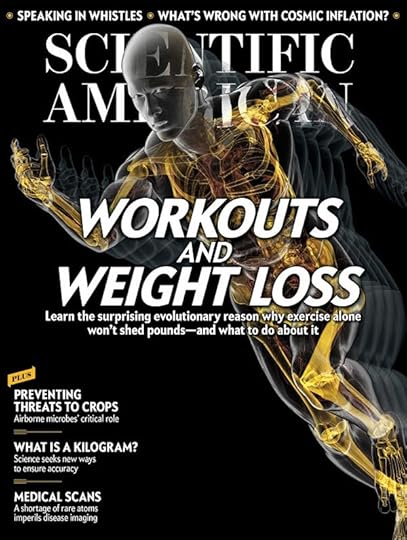
Imagine nothing. Go ahead. What do you see? I picture dark empty space devoid of galaxies, stars and planets. But not only would there be no matter, there would be no space or time either. Not even darkness. And no sentient life to observe the nothingness. Just … nothing. Picture that. You can’t.
Here we face the ultimate question: Why is there something rather than nothing? I have compiled several responses from a number of sources, including a 2013 book by John Leslie and Robert Lawrence Kuhn entitled The Mystery of Existence (Wiley-Blackwell) and Lawrence M. Krauss’s 2017 book The Greatest Story Ever Told—So Far (Atria Books).
Nothing is nonsensical. It is impossible to conceptualize nothing— not only no space, time, matter, energy, light, darkness or conscious beings to perceive the nothingness but not even nothingness. In this sense, the question is literally inconceivable.
Nothing is something. It is a logical fallacy to talk about “nothing” as if it were a “something” that ceases to exist. Here we bump up against the problem of defining what we mean by “nothing” and the restrictions that language imposes on the problem. The very act of talking about “nothing” makes it a “something.” Otherwise, what are we talking about?
Nothing would include God’s nonexistence. In Leslie and Kuhn’s taxonomy of “nothings,” they list what categories of things might be included in “something” that would be negated by “nothing”: physical, mental, platonic, spiritual and God. If by “nothing” is meant no physical objects or matter of any kind, for example, there can still be energy from which matter may arise by natural forces guided by the laws of nature. Physicists, for example, talk about empty space as seething with virtual particles, from which particle-antiparticle pairs come into existence as a consequence of the uncertainty principle of quantum physics. From this “nothingness,” universes may “pop” into existence.
Nothing excludes creation ex nihilo. If by “nothing” is meant that there is no physical, mental, platonic or nonphysical entity of any kind, then there can be no God or gods, which means that there cannot be anything outside of nothing from which to create something. This negates the Christian theologian argument that God created the universe ex nihilo, or “out of nothing,” based on the English translation of Genesis 1:1 that “in the beginning God created the heavens and the earth.” This is misleading. Recent scholarship has suggested that the Hebrew word for “creation” in Genesis 1:1 is bara ( ברא )—a verb that more accurately translated means to “separate” or “divide.” Genesis 1:1 should read, “In the beginning God separated the heavens and the earth.” Separated from what is not indicated.
Nothing is unstable; something is stable. Asking why there is something rather than nothing presumes “nothing” is the natural state of things out of which “something” needs an explanation. Maybe “something” is the natural state of things, and “nothing” would be the mystery to be solved. In his sweeping narrative, The Greatest Story Ever Told—So Far, a sequel to his 2012 book A Universe from Nothing, Krauss notes that “Einstein was one of the first physicists to demonstrate that the classical notion of causation begins to break down at the quantum realm.” Although many physicists objected to the idea of something coming from nothing, he observes that “this is precisely what happens with the light you are using to read this page. Electrons in hot atoms emit photons—photons that didn’t exist before they were emitted—which are emitted spontaneously and without specific cause. Why is it that we have grown at least somewhat comfortable with the idea that photons can be created from nothing without cause, but not whole universes?”
One answer has to do with our discomfort with the Copernican principle, which holds that we are not special. We prefer religious and anthropic explanations that the universe was created and fine-tuned for us because they put humans right back in the center of the cosmos anthropocentrically—it is all about us. But 500 years of scientific discoveries have revealed that it isn’t about us. From this fact, we may gain purchase on a perspective that engages both the religious and scientific impulse toward a sense of awe one gains from contemplating nothing.
January 1, 2017
When Facts Backfire
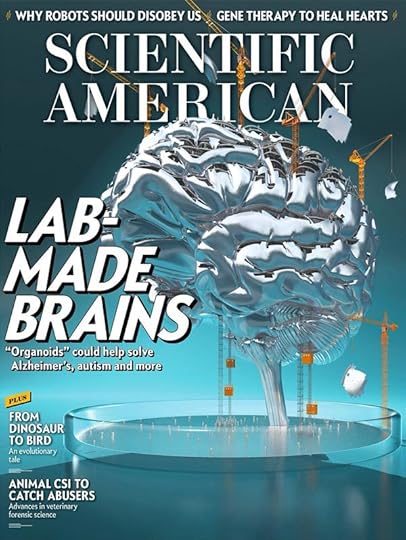
Have you ever noticed that when you present people with facts that are contrary to their deepest held beliefs they always change their minds? Me neither. In fact, people seem to double down on their beliefs in the teeth of overwhelming evidence against them. The reason is related to the worldview perceived to be under threat by the conflicting data.
Creationists, for example, dispute the evidence for evolution in fossils and DNA because they are concerned about secular forces encroaching on religious faith. Anti-vaxxers distrust big pharma and think that money corrupts medicine, which leads them to believe that vaccines cause autism despite the inconvenient truth that the one and only study claiming such a link was retracted and its lead author accused of fraud. The 9/11 truthers focus on minutiae like the melting point of steel in the World Trade Center buildings that caused their collapse because they think the government lies and conducts “false flag” operations to create a New World Order. Climate deniers study tree rings, ice cores and the PPM of greenhouse gases because they are passionate about freedom, especially that of markets and industries to operate unencumbered by restrictive government regulations. Obama birthers desperately dissected the president’s long-form birth certificate in search of fraud because they believe that the nation’s first African- American president is a socialist bent on destroying the country.
In these examples, proponents’ deepest held worldviews were perceived to be threatened by skeptics, making facts the enemy to be slayed. This power of belief over evidence is the result of two factors: cognitive dissonance and the backfire effect. In the classic 1956 book When Prophecy Fails, psychologist Leon Festinger and his co-authors described what happened to a UFO cult when the mother ship failed to arrive at the appointed time. Instead of admitting error, “members of the group sought frantically to convince the world of their beliefs,” and they made “a series of desperate attempts to erase their rankling dissonance by making prediction after prediction in the hope that one would come true.” Festinger called this cognitive dissonance, or the uncomfortable tension that comes from holding two conflicting thoughts simultaneously. Two social psychologists, Carol Tavris and Elliot Aronson (a former student of Festinger), in their 2007 book Mistakes Were Made (But Not by Me) document thousands of experiments demonstrating how people spin-doctor facts to fit preconceived beliefs to reduce dissonance. Their metaphor of the “pyramid of choice” places two individuals side by side at the apex of the pyramid and shows how quickly they diverge and end up at the bottom opposite corners of the base as they each stake out a position to defend.
In a series of experiments by Dartmouth College professor Brendan Nyhan and University of Exeter professor Jason Reifler, the researchers identify a related factor they call the backfire effect “in which corrections actually increase misperceptions among the group in question.” Why? “Because it threatens their worldview or self-concept.” For example, subjects were given fake newspaper articles that confirmed widespread misconceptions, such as that there were weapons of mass destruction in Iraq. When subjects were then given a corrective article that WMD were never found, liberals who opposed the war accepted the new article and rejected the old, whereas conservatives who supported the war did the opposite … and more: they reported being even more convinced there were WMD after the correction, arguing that this only proved that Saddam Hussein hid or destroyed them. In fact, Nyhan and Reifler note, among many conservatives “the belief that Iraq possessed WMD immediately before the U.S. invasion persisted long after the Bush administration itself concluded otherwise.”
If corrective facts only make matters worse, what can we do to convince people of the error of their beliefs? From my experience:
keep emotions out of the exchange,
discuss, don’t attack (no ad hominem and no ad Hitlerum),
listen carefully and try to articulate the other position accurately,
show respect,
acknowledge that you understand why someone might hold that opinion, and
try to show how changing facts does not necessarily mean changing worldviews.
These may not always work to change people’s minds, but now that the nation has just been put through a political fact-check wringer, they may help reduce unnecessary divisiveness.
December 1, 2016
Born This Way
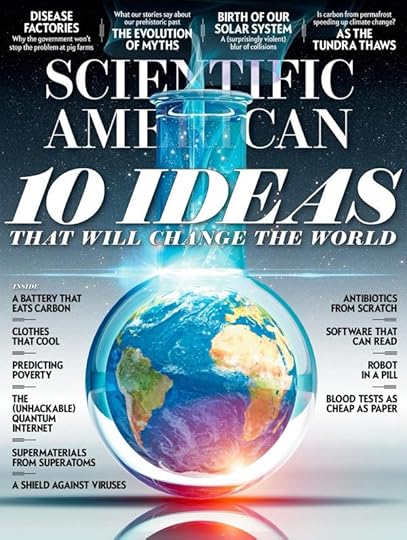
When did you choose to become straight?
Say what?
By demographic distribution (about 95 percent of the population identifies as heterosexual), the majority of you reading this column are straight. You no more chose this sexual orientation than gays or lesbians choose theirs. Yet a new study published in the fall issue of the nonpeer-reviewed journal The New Atlantis by Johns Hopkins University’s Lawrence S. Mayer and Paul R. McHugh on “Sexuality and Gender” claims that “our scientific knowledge in this area remains unsettled,” that there is no “scientific evidence for the view that sexual orientation is a fixed and innate biological property,” and that no one is “born that way.” This sounds so 1990s, the last time the gender wars heated up. What’s going on here?
One clue comes from the journal’s co-publisher, the Ethics and Public Policy Center (EPPC), “dedicated to applying the Judeo-Christian moral tradition to critical issues of public policy.” Already we’re off the science page. EPPC scholars, its Web page continues, “have consistently sought to defend and promote our nation’s founding principles—respect for the inherent dignity of the human person, individual freedom and responsibility, justice, the rule of law, and limited government.”
Shouldn’t such principles apply to everyone regardless of whether or not their sexual orientation is biologically determined? Of course, and in most Western countries today they do. But in Judeo-Christian America, the argument goes like this: The Bible says that homosexuality is a sin (Leviticus 20:13). If sexual orientation has a strong biological component, then gays and lesbians can hardly be held morally culpable for their sinful ways. But if it’s a choice, then they can be rehabilitated (through “conversion therapy”) and forgiven (“love the sinner, hate the sin” goes the popular trope). Evangelist Jimmy Swaggart articulated the logic this way: “While it is true that the seed of original sin carries with it every type of deviation, aberration, perversion, and wrongdoing, the homosexual cannot claim to have been born that way any more than the drunkard, gambler, killer, etc.”
While the authors of the New Atlantis article are not this crude and overtly bigoted in their conclusions, according to geneticist Dean Hamer, emeritus at the National Institutes of Health, “it is a selective and outdated collection of references and arguments aimed at confusing rather than clarifying our understanding of sexual orientation and gender identity.” For example, Mayer and McHugh claim that the concept of sexual orientation is “ambiguous” and that there are “no agreed-upon definitions for purposes of empirical research.” Not so. The American Psychological Association defines sexual orientation as “an enduring pattern of emotional, romantic and/or sexual attractions to men, women or both sexes,” and as Hamer points out, sexual orientation is far less “ambiguous” than personality traits like “self-esteem” and “warmth” that scientists study without religious and political ramifications.
Mayer and McHugh also appear to be data snooping when they reference only one of six studies in the peer-reviewed literature of the past 16 years that employ proper probability-sampling methods, “and it just so happens to be the one with the lowest estimate of genetic influence of the entire set,” Hamer says. Moreover, the entire article is gainsaid by a massive meta-analysis study by Northwestern University psychologist Michael Bailey and his colleagues published in the September issue of the peer-reviewed journal Psychological Science in the Public Interest, showing that “there is considerably more evidence supporting nonsocial causes of sexual orientation than social causes.” Evidence includes: “moderate genetic influences demonstrated in well-sampled twin studies; the cross-culturally robust fraternal- birth-order effect on male sexual orientation; and the finding that when infant boys are surgically and socially ‘changed’ into girls, their eventual sexual orientation is unchanged (i.e., they remain sexually attracted to females). In contrast, evidence for the most commonly hypothesized social causes of homosexuality—sexual recruitment by homosexual adults, patterns of disordered parenting, or the influence of homosexual parents—is generally weak in magnitude and distorted by numerous confounding factors.”
The problem with any area of research that intersects with religion or politics is the possibility of motivated reasoning and the confirmation bias, or as the Bible says (Matthew 7:7): “Seek and ye shall find.” Where concepts determine percepts, ideology trumps facts and science suffers.
November 1, 2016
Why Gloom Trumps Glad
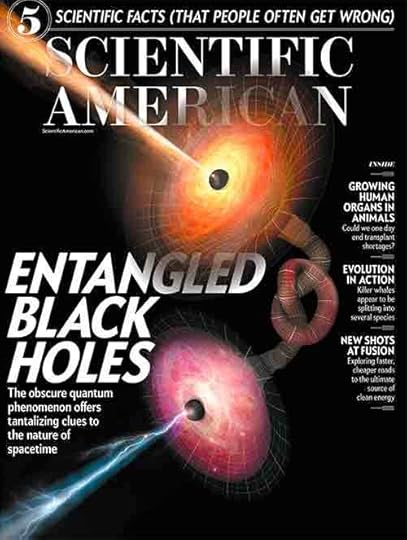
“If you had to choose a moment in time to be born, any time in human history, and you didn’t know ahead of time what nationality you were or what gender or what your economic status might be,” what time would you choose? Paleolithic? Neolithic? Ancient Greece or Rome? Medieval times? Elizabethan England? Colonial America? The 1950s? “You’d choose today,” answered the man who posed this question in an April 2016 speech, President Barack Obama. “We are fortunate to be living in the most peaceful, most prosperous, most progressive era in human history,” he opined, adding “that it’s been decades since the last war between major powers. More people live in democracies. We’re wealthier and healthier and better educated, with a global economy that has lifted up more than a billion people from extreme poverty.”
If these facts are true—and they are (see, for example, economist Max Roser’s ourworldindata.org and the data at human progress.org aggregated from the World Bank, the United Nations, the Organization for Economic Co‑operation and Development, and Eurostat)—then why the doom and gloom heaped on us by politicians and pundits on both sides of the political aisle? First, news media outlets are far more likely to report bad news than good, simply because that is what they have been tasked to do. Another day in Turkey without a coup goes unreported, but just try and take over a country without the world’s media covering it. Second, as psychologist Roy F. Baumeister explained it in the title of a now classic 2001 paper he co-authored in the journal Review of General Psychology, “Bad Is Stronger Than Good.” Reviewing a wide range of evidence across many domains of life, the authors found that “bad emotions, bad parents, and bad feedback have more impact than good ones, and bad information is processed more thoroughly than good. Bad impressions and bad stereotypes are quicker to form and more resistant to disconfirmation than good ones.” Why?
One answer, I suggest, is in the psychology of loss aversion, in which, on average, losses hurt twice as much as gains feel good. To get someone to take a gamble, the potential payoff must be about twice the potential loss. Why? Because of the endowment effect, which is the tendency to value what we own more than what we do not own. In one experiment, for example, economist Richard Thaler gave subjects a coffee mug valued at $6 and asked them what they would sell it for. The median price was $5.25. Another group of subjects were asked how much they would pay for the same mug. The median price was less than $2.75. Loss aversion and the endowment effect are reinforced by the status quo bias, or the tendency to opt for whatever it is we are accustomed to. For example, we tend to prefer existing personal, social, economic and political arrangements over proposed alternatives.
Why is our psychology wired this way? Evolution. According to Harvard University psychologist Steven Pinker in a 2015 article in Cato’s Letter on “The Psychology of Pessimism,” in our evolutionary past there was an asymmetry of payoffs in which the fitness cost of overreacting to a threat was less than the fitness cost of underreacting. The world was more dangerous in our evolutionary past, so it paid to be risk-averse and highly sensitive to threats, and if things were good, then the status quo was worth maintaining.
All of which helps to explain much political pessimism, such as what we are bombarded with every election. In his book Moral, Believing Animals (Oxford University Press, 2003), sociologist Christian Smith reviews the many narratives politicians and pundits construct to reinforce the moral foundations that most concern each side. It boils down to a simple template of “once upon a time things were bad, and now they’re good thanks to our party” or “once upon a time things were good, but now they’re bad thanks to the other party.” Sound familiar? In 2008 Obama campaigned on “change we need” after eight years of a Republican presidency. In 2016 Donald Trump campaigned on making America “great again” after eight years of a Democratic presidency.
As John Stuart Mill observed in 1859: “A party of order or stability, and a party of progress or reform, are both necessary elements of a healthy state of political life.”
October 1, 2016
Methuselah’s Moon Shot

Toward the end of his life, in an essay entitled “Topic of Cancer” in 2010 in Vanity Fair, Christopher Hitchens answered his own rhetorical query poignantly: “To the dumb question ‘Why me?’ the cosmos barely bothers to return the reply: Why not?”
The cosmos has never been particularly loquacious with its intentions, often requiring Brobdingnagian-sized ventures—from particle accelerators and space telescopes to genome and connectome projects—to tease out its deepest secrets. Can the same be done for death? A number of scientists and Silicon Valley billionaires think it can.
Oracle co-founder Larry Ellison, for example, has given more than $430 million toward antiaging research because he finds the quiet acquiescence of mortality “incomprehensible.” XPRIZE entrepreneur Peter H. Diamandis co-founded Human Longevity, which, in conjunction with StartUp Health, launched the Longevity Moonshot, whose mission is “to extend and enhance healthy life by 50+ years and change the face of aging.”
Google co-founder Larry Page launched a biotech company called Calico, which aims to extend the human life span by a century. Calling it “a longer-term bet,” Page said he was confident they “can make good progress within reasonable timescales with the right goals and the right people.” One of those people is Ray Kurzweil, the scientist and futurist (and now a director of engineering at Google) who thinks that if we can survive until the 2040s, we can “live long enough to live forever.”
PayPal co-founder Peter Thiel created Breakout Labs to fund scientists and start-ups that include some working on achieving immortality, and he invested $3.5 million in the Methuselah Foundation, co-founded by Aubrey de Grey, the biomedical gerontologist whose Strategies of Engineered Negligible Senescence (SENS) treats aging as an engineering problem to be solved at the cellular level by reprogramming cells to stop aging. A tireless promoter of the belief that our generation will be the first to achieve immortality—or at least to live indefinitely—de Grey is on record claiming that the first human to live 1,000 years is alive today. If you’ve seen any television show or documentary film on aging, you’ve seen the inimitable Aubrey de Grey, with his waist-length ponytail and Methuselahlike beard and baritone British accent. I’ve met Aubrey and shared a beer or two with him (if there is a fountain of youth in de Grey’s world, it bubbles with beer) as he leaned in to bend my ear on the latest shields against the grim reaper’s scythe.
I like beer, but I have my doubts. First, the second law of thermodynamics is paramount in the universe, so entropy will get us in the long run, if not the short. As the renowned astrophysicist Sir Arthur Stanley Eddington noted in 1928, “If your theory is found to be against the second law of thermodynamics I can give you no hope; there is nothing for it but to collapse in deepest humiliation.”
Second, extrapolating trend lines far into the future is problematic. Accelerating change may not continue at those rates nor apply to all technologies. Downsizing of computers from room size to pocket size is one thing; it is quite another to go from pocket size to cell size. Third, according to a 2007 review paper in the journal Clinical Interventions in Aging entitled “The Aging Process and Potential Interventions to Extend Life Expectancy,” there is no single cause of aging and more than 300 theories for why cells deteriorate and stop dividing. The authors are thus led to conclude that “to date, no convincing evidence showing the administration of existing ‘anti-aging’ remedies can slow aging or increase longevity in humans is available.” And the SENS Research Foundation website admits: “No currently-available medical intervention or lifestyle choice has been shown to affect the basic human aging process.”
Still, hope springs eternal, and as Bill Gifford reported in last month’s Scientific American (“Living to 120”), there are some promising hints of antiaging properties of the diabetes drug metformin, which the FDA approved in 2015 for a clinical trial. If it helps more of us live healthy lives up to the ceiling of some 120 years, that would be welcome progress, but let’s not delude ourselves into believing radical life extension is around the corner. Our bodies are mortal, at least for now, but our genes are immortal as long as our species continues, so we owe it to future generations to create a sustainable planet and civilization.
September 1, 2016
At the Boundary of Knowledge

The history of science has beheld the steady replacement of the paranormal and the supernatural with the normal and the natural. Weather events once attributed to the supernatural scheming of deities are now understood to be the product of natural forces of temperature and pressure. Plagues formerly ascribed to women cavorting with the devil are currently known to be caused by bacteria and viruses. Mental illnesses previously imputed to demonic possession are today sought in genes and neurochemistry. Accidents heretofore explained by fate, karma or providence are nowadays accredited to probabilities, statistics and risk.
If we follow this trend to encompass all phenomena, what place is there for such paranormal forces as ESP or supernatural agents like God? Do we know enough to know that they cannot exist? Or is it possible there are unknown forces within our universe or intentional agents outside of it that we have yet to discover? According to California Institute of Technology physicist Sean Carroll in his intensely insightful book The Big Picture (Dutton, 2016), “All of the things you’ve ever seen or experienced in your life—objects, plants, animals, people—are made of a small number of particles, interacting with one another through a small number of forces.” Once you understand the fundamental laws of nature, you can scale up to planets and people and even assess the probability that God, the soul, the afterlife and ESP exist, which Carroll concludes is very low.
The postmodern belief that discarded ideas mean that there is no objective reality and that all theories are equal is more wrong than all the wrong theories combined.
But isn’t the history of science also strewn with the remains of failed theories such as phlogiston, miasma, spontaneous generation and the luminiferous aether? Yes, and that is how we know we are making progress. The postmodern belief that discarded ideas mean that there is no objective reality and that all theories are equal is more wrong than all the wrong theories combined. The reason has to do with the relation of the known to the unknown.
As the sphere of the known expands into the aether of the unknown, the proportion of ignorance seems to grow—the more you know, the more you know how much you don’t know. But note what happens when the radius of a sphere increases: the increase in the surface area is squared while the increase in the volume is cubed. Therefore, as the radius of the sphere of scientific knowledge doubles, the surface area of the unknown increases fourfold, but the volume of the known increases eightfold. It is at this boundary where we can stake a claim of true progress in the history of science.
Take our understanding of particles and forces, which Carroll says “seems indisputably accurate within a very wide domain of applicability,” such that “a thousand or a million years from now, whatever amazing discoveries science will have made, our descendants are not going to be saying ‘Haha, those silly twenty-first-century scientists, believing in ‘neutrons’ and ‘electromagnetism.’” Thus, Carroll concludes that the laws of physics “rule out the possibility of true psychic powers.” Why? Because the particles and forces of nature don’t allow us to bend spoons, levitate or read minds, and “we know that there aren’t new particles or forces out there yet to be discovered that would support them. Not simply because we haven’t found them yet, but because we definitely would have found them if they had the right characteristics to give us the requisite powers.”
What about a supernatural God? Perhaps such an entity exists outside nature and its laws. If so, how would we detect it with our instruments? If a deity used natural forces to, say, cure someone’s cancer by reprogramming the cancerous cells’ DNA, that would make God nothing more than a skilled genetic engineer. If God used unknown supernatural forces, how might they interact with the known natural forces? And if such supernatural forces could somehow stir the particles in our universe, shouldn’t we be able to detect them and thereby incorporate them into our theories about the natural world? Whence the supernatural?
It is at the horizon where the known meets the unknown that we are tempted to inject paranormal and supernatural forces to explain hitherto unsolved mysteries, but we must resist the temptation because such efforts can never succeed, not even in principle.
August 1, 2016
The Quack of the Gaps Problem
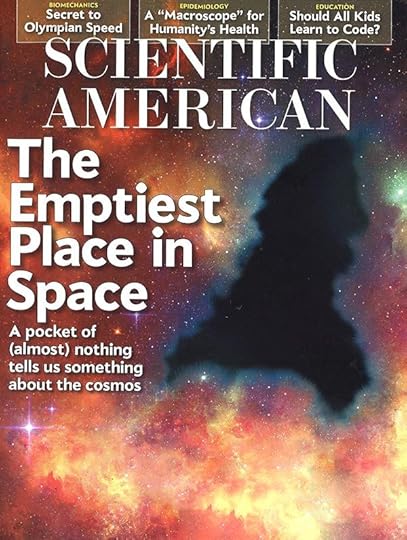
This past April 2, on World Autism Awareness Day, Apple released a heartstrings-tugging commercial depicting an autistic boy typing, in part with the assistance of a facilitator, a message on an iPad that voiced: “So many people can’t understand that I have a mind. All they see is a person who is not in control. But now you can hear me. The iPad helps me to see not only my words, but to hold onto my thoughts.”
The commercial was surprising because this system of “facilitated communication” (FC) was thoroughly discredited in the 1990s. Facilitators had used plastic alphabet keyboards or portable typing devices, and in various videos—for example, the 1993 Frontline episode “Prisoners of Silence”— you see children who are not even looking at the keyboard as facilitators direct their typing or facilitators moving the keyboard under a child’s hand to produce the proper keystrokes. The technique was an academic curiosity until FC-generated messages included graphic descriptions of sexual abuse by families or caretakers of numerous children. Charges and lawsuits were filed, and courts needed scientists to determine who authored the accusations—the children or the facilitators?
Howard Shane, now director of the Autism Language Program at Boston Children’s Hospital, and Doug Wheeler, then at the O. D. Heck Developmental Center in Schenectady, N.Y., conducted independent controlled experiments in which autistic children and their facilitators were shown pictures of either the same or different objects while blinded to what each other saw. What was typed was always and only what the facilitator saw.
Since then, as Emory University psychologist (and Scientific American Mind adviser) Scott O. Lilienfeld, an expert on pseudoscience in psychology and psychiatry, told Emory’s eScienceCommons blog, dozens of controlled studies have unequivocally concluded that FC “doesn’t work.” Worse, “the false hope buoyed by discredited therapies can be cruel, and it may prevent people from trying an intervention that actually could deliver benefits.” In a 2014 paper Lilienfeld co-wrote with Shane and others on “The Persistence of Fad Interventions in the Face of Negative Scientific Evidence” in Evidence-Based Communication Assessment and Intervention, a list of failed autism treatments included gluten-free diets, antifungal interventions, chelation therapy, nicotine patches, testosterone, marijuana, camel milk, weighted vests, magnetic shoe inserts and even bleach enemas.
Call it the Quack of the Gaps problem: gaps in scientific knowledge are filled with anyone’s pet “theory” and corresponding “treatment.” When the evidence is lacking, proponents accuse skeptics of being closed-minded or of using hate speech. At Syracuse University, where FC is still promoted through the Institute on Communication and Inclusion, 28 faculty signatories issued a statement supporting FC in response to a series of critical articles in the university’s newspaper, the Daily Orange, proclaiming FC “a fundamental right” and that these studies “are based on the foundation that people who type to communicate have been ‘scientifically’ labeled as intellectually lesser and thus what they type cannot possibly be attributed to them.” So bias caused the negative results. “We must recognize that this argument has a history that spans groups of people in the U.S., a history of ‘scientific’ claims stating that … women are intellectually inferior, Blacks are intellectually inferior … these kinds of ‘scientific’ claims built upon intellectual inferiority are offensive and wrong.”
What is offensive and wrong is promoting a pseudoscientific technique such as FC as “scientific” and responding to skeptics by accusing them of bigotry. As for rights, what about the rights of the nonverbal Australian man whose facilitator, Martina Susanne Schweiger, admitted in court in 2014 to sexually molesting him in 2011, when he was 21, because, she said, through FC he said he loved her? Or the rights of the then 30-year-old African-American man with severe mental disabilities whose facilitator, the Syracuse-trained Anna Stubblefield, was sentenced to 12 years in prison in 2016 for sexually assaulting him in 2011, after she determined through FC that they were in love? Or the rights of the many loving parents and caretakers wrongfully accused of sexual abuse purely through FC?
Yoking the rights of autistic children to FC is self-serving sophistry. People with autism have the same rights as everyone else regardless of their communication skills. Rights are not vouchsafed only to those who can communicate, and, of all people, university professors should know that. Shame on them.
July 1, 2016
Tiger Blood and Goat Milk
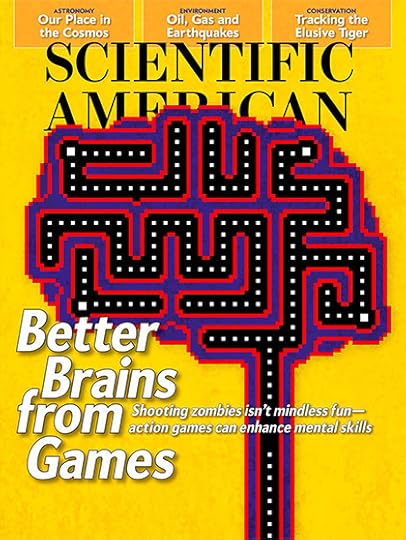
When basketball legend Magic Johnson announced in 1991 that he had tested positive for HIV, it was a death sentence, and he promptly retired from the Los Angeles Lakers. Fans mourned his coming demise, but to everyone’s astonishment, Magic’s life continued in relative normalcy. A quarter of a century later he is an active entrepreneur, business leader, philanthropist and advocate for HIV/AIDS prevention.
Magic’s story is emblematic of one of the great medical achievements of our time. Although there is still no cure or vaccine for HIV, teams of medical researchers have developed a highly active antiretroviral therapy (the HAART “cocktail”) that significantly slows the progression of the disease by reducing the viral load to an undetectable level. If treatment is started promptly after early detection in young adults, for example, life expectancy returns close to normal.
Perhaps this is why there was far less media frenzy and social mourning after the November 2015 announcement by actor Charlie Sheen that he was HIVpositive. Most assumed HAART would save Sheen’s life, not his “tiger blood” and “Adonis DNA” that he boasted about during his highly publicized 2011 meltdown following his dismissal from the hit TV series Two and a Half Men.
What a surprise, then, to see featured on the popular HBO series Real Time with Bill Maher on January 29, 2016, one Dr. Samir Chachoua, who told Maher and his more than four million viewers that he cured Sheen of HIV through his own drug cocktail of milk from arthritic goats. The treatment is based on Chachoua’s “nemesis theory” that “for every disease there is an antidisease organism capable of destroying it and restoring health.” Goat milk infected with caprine arthritis encephalitis virus, Chachoua says, is HIV’s nemesis. When Sheen went to see him in Mexico (Chachoua is not licensed to practice medicine in the U.S.), very soon after treatment Sheen’s liver tests allegedly returned to normal levels.
Chachoua also boasted that he had eradicated HIV from the small African island nation of Comoros, and when Maher asked him why he wasn’t better known, he said that his cure was buried by the Cedars-Sinai Medical Center in Los Angeles after he sent clinicians there his vaccine for testing.
Not likely. According to Sheen’s doctor, University of California, Los Angeles, professor Robert Huizenga, Sheen went on the HAART cocktail in July 2011 after his diagnosis, and by December of that year his viral load was undetectable. (“Undetectable” does not mean cured; the virus can be hiding in the body.) Four years later, in search of a permanent cure, Sheen visited Chachoua, who credited his goat-milk nemesis for Sheen’s undetectable HIV load. Sheen went off the antiretroviral medications, and his HIV levels shot back up. Fortunately for him, Sheen came to his senses and started taking his antiretroviral medications.
As for the Cedars-Sinai “cover-up,” in a lawsuit against the medical center Chachoua claimed that it reverse engineered his vaccine and destroyed his samples, but a court document states that he failed “adequately to identify the alleged trade secrets; and has not shown that such secrets are deserving of protection” and that “Chauchoua has failed to introduce admissible evidence supporting an inference that Cedars improperly acquired or revealed any alleged trade secrets.” Further, Cedars-Sinai told the court that once it learned in July 1996 that Chachoua had “improperly used his collaboration with Cedars to promote his products for treating HIV infection” it terminated testing of his virus and “returned all remaining samples … for delivery to Chachoua on September 25, 1996.” Finally, according to the U.C.S.F. Medical Center, of the nearly 800,000 people of Comoros, about 7,900 of them have HIV/ AIDS. Some cure.
After the HBO show, Sheen and his physician appeared on The Dr. Oz Show to denounce Chachoua as, in Sheen’s words, a “grand work of fiction,” for whom “I’m not going to be trading my meds for arthritic goat milk,” because “guys like this are dangerous.” The real nemeses of many potentially deadly diseases for which we do not as yet have cures are those who would capitalize on our fears.
Michael Shermer's Blog
- Michael Shermer's profile
- 1155 followers



